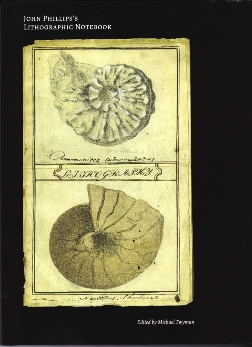
A review of a book about the history of lithography might seem out of place in a magazine aimed at geologists. But there are plenty of reasons why they will find it fascinating. Lithography – literally printing from stone – was invented in 1796 as a cheap method for publishing theatrical works. It soon caught the attention of geologists as a useful method for printing maps, drawings, and manuscripts. William Smith (1769 – 1839) was one of these, and he seems to have encouraged his orphaned nephew, John Phillips (1800 – 1874), to look into its potential uses.
Phillips arrived in London in November 1815 to work with on his uncle's extensive fossil collection and became, in effect, Smith's geological apprentice. He went on to rise through the ranks and became, in 1853, the first ‘Professor of Geology’ at Oxford University. Soon after his arrival in London, the teenager began a series of experiments to improve and understand the process of lithography. His notebook, recording his experiments and observations, is now preserved in the archives of the Oxford University Museum of Natural History.
In John Phillips's Lithographic Notebook, Phillips's work is presented in full as a series of double-page spreads, with a facsimile page from the notebook on one and a transcript and annotations by historian of printing, Michael Twyman, facing. It is a fascinating document – a wonderful example of a lab notebook from the past. It not only provides an insight into the development of lithography as a process, but also Phillips's skill as an experimentalist and his ideas for improving it.
Documents like this, which were not meant for publication, often bring the personality of their author to life. Just the sight of Phillips's clear copperplate handwriting is evocative of a time when handwriting was a major means of communication. Charmingly personal comments appear in some places. On one page Phillips bemoans how thoughts fly out of his head, and writes: "When a thought suddenly occurs it most probably will soon depart, therefore I think it best to mark it in a black letter." We've all been there, and comments like this really bring the past to life.
Twyman's introduction, annotation and endnotes are a model of historical scholarship. They are informative, and clearly, concisely and engagingly written. The book itself – a beautifully produced slim hardback with the text and illustrations printed on heavy, cream-coloured paper – would grace any coffee table. But it also highlights the links between geology and lithography, sheds new light on the activities and motivations and talents of both Smith and Phillips, and emphasises the importance of presentation in communication. Treat yourself!
Reviewed by Nina Morgan
JOHN PHILLIPS'S LITHOGRAPHIC NOTEBOOK by MICHAEL TWYMAN (ed), Printing Historical Society, London, 2016, 103pp. ISBN 978-0-900003-16-5. List Price: £30.00 (£15 to members of the Printing Historical Society).